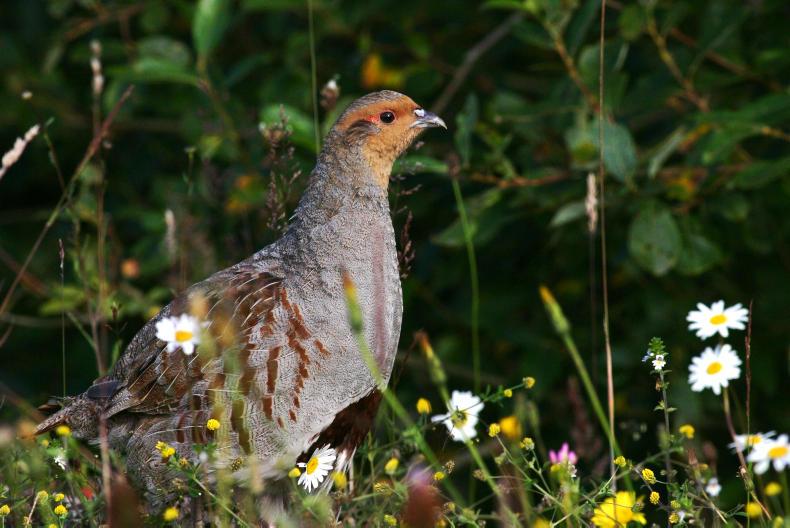Tillage farmland accounts for around 8% of Ireland’s agricultural area and is a crucial habitat for biodiversity.
However, changes in agricultural land use, including intensification and the decline in mixed (livestock and crop) farming, are factors that threaten biodiversity through habitat loss.
Specifically in relation to farmland birds, a new report references Robinson et al (2001) who noted that:
“Local extinctions have occurred in grassland dominated areas in western Britain, which may be influenced by loss in habitat diversity and a decline in the amount of arable cultivation. P.1059”
“Increasing arable cultivation in pastoral landscapes is likely to be beneficial to granivorous species, particularly those that have experienced severe population declines. P.1066”
The correlation was highlighted in a recently published report by Tillage Industry Ireland which examines the impact of the Irish tillage sector on the Irish economy.
Birds which rely on tillage land need abundant seed through the winter and early spring and plentiful supplies of insects during the spring and summer for their chicks.
The report outlines how much of the 57,400ha of land which was taken out of tillage production over the past decade is now in grassland.
The reduction in tillage as a subsidiary enterprise on Irish livestock farms may be negatively affecting farmland bird populations, the report suggests.
Mixed enterprises
Consequently, sustaining mixed agricultural land use that includes pockets of tillage within Ireland’s grassland landscapes may be of particular value in agri-environmental planning.
The environmental contribution of tillage is further enhanced through a variety of current management practices, supported through agri-environmental policy (CAP, GLAS), including:
Minimum tillage cultivation to reduce energy consumption, reduce erosion, and enhance soil health. Integrated pest management strategies to reduce reliance on plant protection products. Management of arable margins along field and riparian boundaries. Environmental management of fallow land including wild bird mixtures. Sowing of winter cover crops to mitigate nutrient loss and sequester carbon.Increased crop diversity in tillage rotations with break crops such as pulses.Low-emission slurry spreading on tillage land.
Tillage farmland accounts for around 8% of Ireland’s agricultural area and is a crucial habitat for biodiversity.
However, changes in agricultural land use, including intensification and the decline in mixed (livestock and crop) farming, are factors that threaten biodiversity through habitat loss.
Specifically in relation to farmland birds, a new report references Robinson et al (2001) who noted that:
“Local extinctions have occurred in grassland dominated areas in western Britain, which may be influenced by loss in habitat diversity and a decline in the amount of arable cultivation. P.1059”
“Increasing arable cultivation in pastoral landscapes is likely to be beneficial to granivorous species, particularly those that have experienced severe population declines. P.1066”
The correlation was highlighted in a recently published report by Tillage Industry Ireland which examines the impact of the Irish tillage sector on the Irish economy.
Birds which rely on tillage land need abundant seed through the winter and early spring and plentiful supplies of insects during the spring and summer for their chicks.
The report outlines how much of the 57,400ha of land which was taken out of tillage production over the past decade is now in grassland.
The reduction in tillage as a subsidiary enterprise on Irish livestock farms may be negatively affecting farmland bird populations, the report suggests.
Mixed enterprises
Consequently, sustaining mixed agricultural land use that includes pockets of tillage within Ireland’s grassland landscapes may be of particular value in agri-environmental planning.
The environmental contribution of tillage is further enhanced through a variety of current management practices, supported through agri-environmental policy (CAP, GLAS), including:
Minimum tillage cultivation to reduce energy consumption, reduce erosion, and enhance soil health. Integrated pest management strategies to reduce reliance on plant protection products. Management of arable margins along field and riparian boundaries. Environmental management of fallow land including wild bird mixtures. Sowing of winter cover crops to mitigate nutrient loss and sequester carbon.Increased crop diversity in tillage rotations with break crops such as pulses.Low-emission slurry spreading on tillage land. 





 This is a subscriber-only article
This is a subscriber-only article










SHARING OPTIONS: